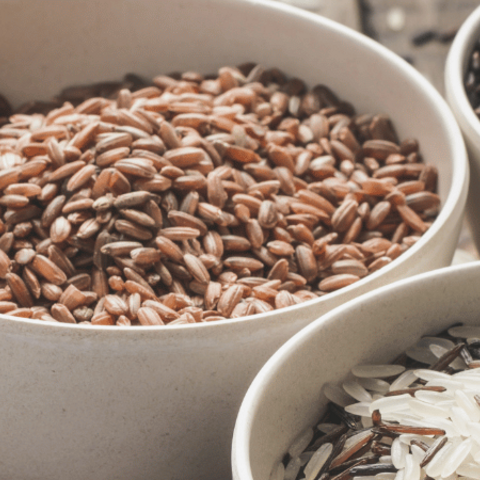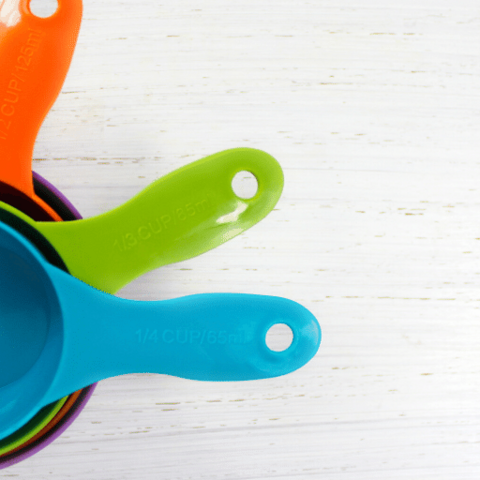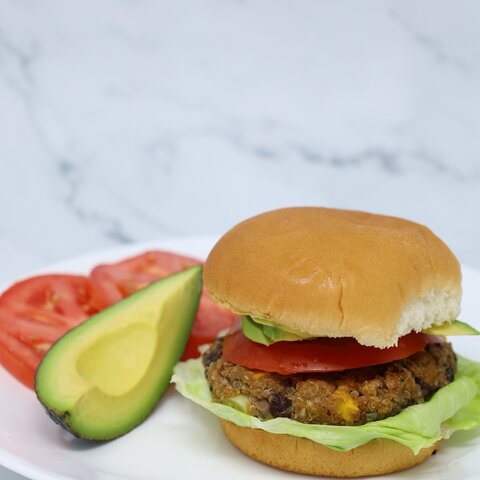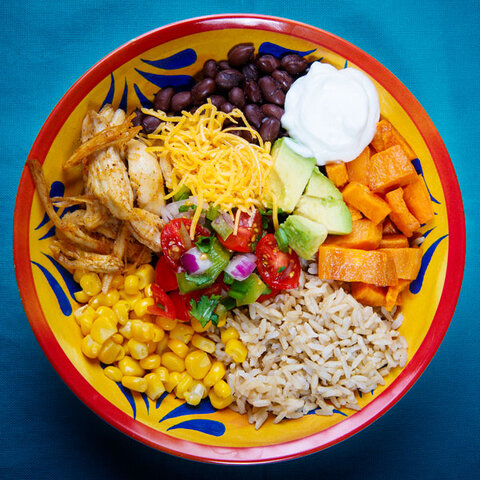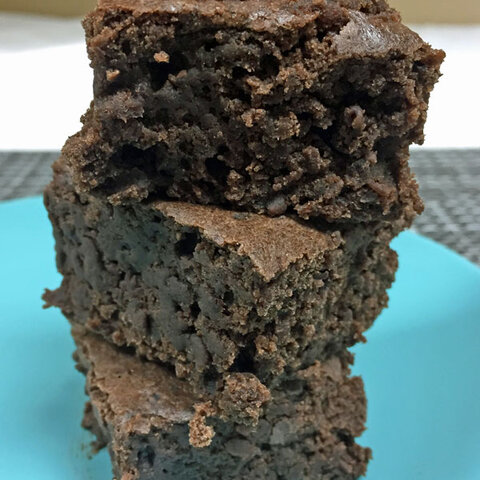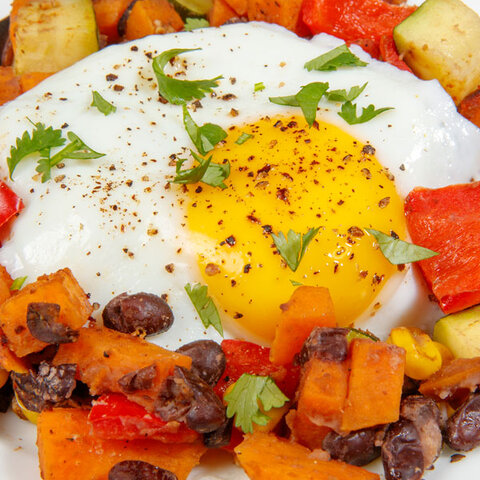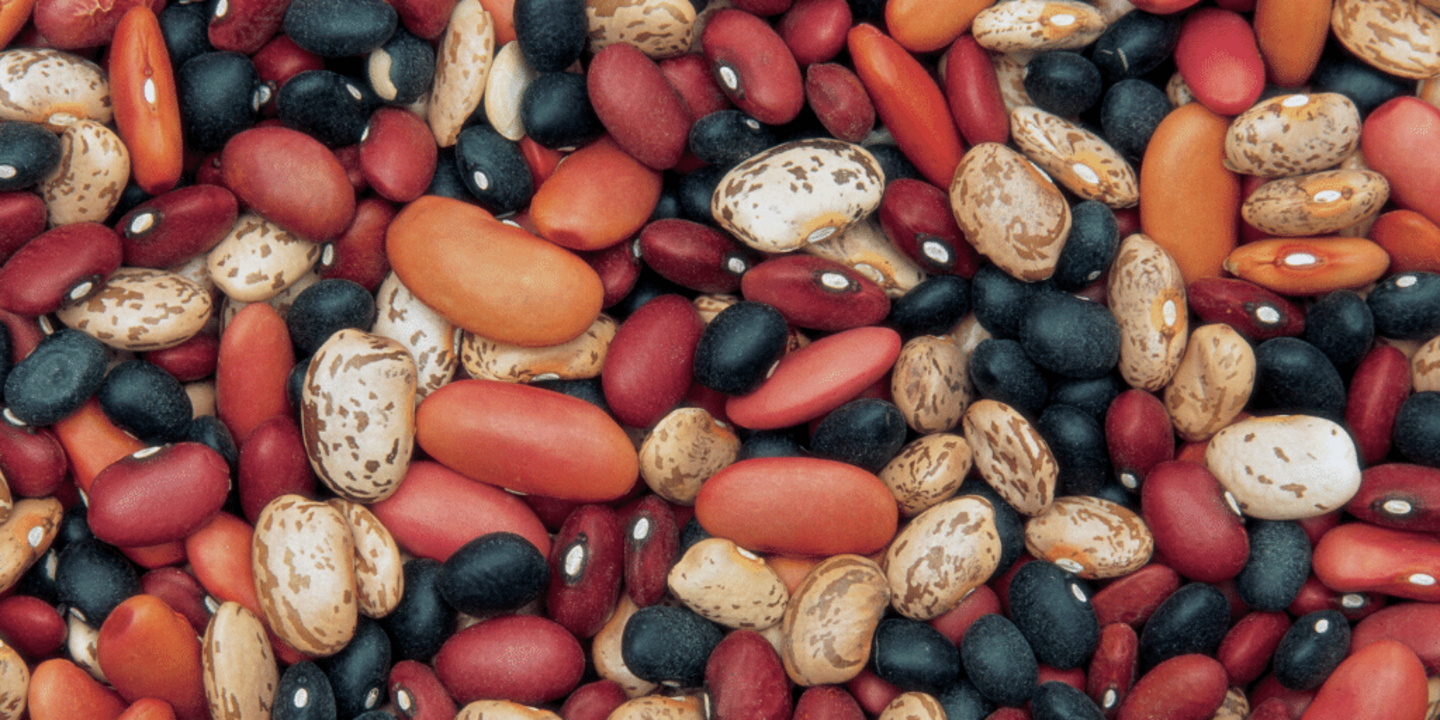
If you have avoided cooking dry beans from scratch because "it takes too long," consider the actual "hands-on" time can be just minutes! All it takes is a little planning ahead for a time to soak the beans and a time to cook them.
One pound (2 cups) of dry edible beans yields about 6 cups of cooked beans. If your recipe calls for one 15-ounce can of beans, use 1 ¾ cups of cooked beans, drained. There are two steps to cooking dry beans — soaking and cooking:
1. Soaking Beans
Soaking beans allows the dried beans to absorb water, which begins to dissolve the starches that cause intestinal discomfort. While beans are soaking, they are also doubling to tripling in their size. (Note: Lentils, split peas and black-eyed peas do not need to be soaked.)
- Pick through the beans, discarding any discolored or shriveled beans or any foreign matter.
- Rinse the beans well.
- Soak beans with one of these methods:
- Hot Soak: In a large pot, add 10 cups of water for each pound (2 cups) of dry beans. Heat to boiling; boil for 2–3 minutes. Remove from heat, cover, and soak for up to 4 hours. Hot soaking is the preferred method since it reduces cooking time, helps dissolve some of the gas-causing substances in beans, and most consistently produces tender beans.
- Quick Soak: This is the fastest method. In a large pot, add 6 cups of water for each pound (2 cups) of dry beans. Heat to boiling; boil for 2–3 minutes. Remove from heat, cover, and soak for at least 1 hour.
- Traditional Overnight Soak: This is the easiest method. Place dry beans in a large container; for each pound (2 cups) beans, add 10 cups of cold water. Cover and refrigerate 8 hours or overnight.
- Drain and rinse beans soaked by either method with fresh, cool water.
Should you add baking soda to help soften the beans? Baking soda will destroy the B-vitamin thiamin and may give the beans an off-flavor.
2. Cooking Beans
Cooking the beans makes them edible and digestible. Use cooked beans in your favorite recipes or refrigerate beans in shallow containers if they are to be eaten later. Freeze any extra beans within 4 days after cooking them. Beans can be cooked by using the stovetop or a multicooker/pressure cooker.
Stovetop Instructions
- Place soaked beans in a large pot; cover with fresh water and bring to a boil.
- Reduce heat, cover, and simmer gently until beans are tender but firm. Most beans will cook in 45 minutes to 2 hours depending on the variety. Periodically, try a taste test or mash a bean against the side of the pot with a fork or spoon. Check occasionally if you need to add more water. Here are approximate cooking times for beans:
- Black beans: 60-90 minutes
- Great Northern beans: 45-60 minutes
- Kidney beans: 90-120 minutes
- Navy beans: 90-120 minutes
- Pinto beans: 90-120 minutes
- Drain immediately.
- Cooked beans can be used immediately or refrigerated and used within 3-4 days. Beans can also be frozen for later use.
- When to add flavorings:
- Herbs and spices may be added any time, but it is recommended adding them towards the end to reduce flavor loss.
- Add acidic foods (lemon juice, vinegar, tomatoes, wine, etc.) after beans are cooked as these foods can prevent beans from becoming tender.
Multicooker/Electric Pressure Cooker Instructions
Should you soak beans before cooking in a multicooker/electric pressure cooker? Always refer to the manufacturer's instructions to learn more about specific cooking recommendations for your model. You may need to experiment to determine the optimum recipe and process with your pressure cooker model.
In testing done by North Dakota State Extension, it was found that pre-soaking the beans was not always necessary. The pre-soaked beans tended to split and bubble more. However, soaking the beans cuts down on cooking time and may reduce the occurrence of intestinal gas when eating the beans. Many of the gas-causing carbohydrates are released into this soaking water that can be discarded after soaking.
North Dakota State Extension recommends adding 1 to 4 tablespoons of vegetable oil and up to 1 tablespoon of salt to 1 pound of beans during soaking or cooking. Tests have shown that when oil and salt are added, dry beans keep their shape and exterior skin intact, and froth and foam less during pressure cooking.
Here are general instructions for cooking unsoaked beans in a multicooker/electric pressure cooker:
- Pick through the beans, discarding any discolored or shriveled beans or any foreign matter. Rinse the beans well.
- Place beans in electric pressure cooke and cover with about 6 cups of fresh water. Make sure there is at least 2 inches of water above the beans and the pressure cooker is not more than ½ full.
- Add 1 to 4 tablespoons of vegetable oil and up to 1 tablespoon of salt to 1 pound of beans.
- Seal pressure cooker and cook according to the manufacturer's instructions. Adjust cooking times as needed depending on the variety. Cooking longer will result in softer beans. Beans should be tender but not mushy. Here are approximate pressure cooking times for unsoaked beans:
- Black beans: 20-30 minutes
- Kidney beans: 20-30 minutes
- Navy beans: 25-35 minutes
- Pinto beans: 15-20 minutes
- Allow 20 minutes for natural pressure release after cooking. If beans are not quite tender, cook them again on high pressure for 10 minutes and then quick release the pressure.
- Drain immediately.
- Cooked beans can be used immediately or refrigerated and used within 3-4 days. Beans can also be frozen for later use.
Sources:
Bean Counting: The Bean Yield Chart, The Bean Institute
Natural Toxins in Food, Food and Drug Administration
Save Time Using a Pressure Cooker, The Bean Institute
Field to Fork Pressure Cook Dry Beans to Save Money and Time, NDSU Extension
Updated by Kayla Colgrove and reviewed by Cami Wells and Tammie Ostdiek. This article was originally written by Alice Henneman.
Tags:
